Multichannel Feedforward Active Noise Control System with Optimal Reference Microphone SelectorBased on Time Difference of Arrival
Abstract
:1. Introduction
2. Single-Channel Feedforward ANC System and Causality Constraint
2.1. Single-Channel Feedforward ANC System
2.2. Causality Constraint of Feedforward ANC System
3. Multichannel Feedforward ANC System with Optimal Reference Microphones Based on TDOA
3.1. Multichannel Feedforward ANC System
3.2. Proposed Multichannel Feedforward ANC System
4. Experimental Results
4.1. Experiment 1: Noise Reduction Experiment to Evaluate the Multichannel Feedforward ANC System
4.2. Experiment 2: Detection of Change in Noise Environment and Selection of Reference Microphones in the Proposed ANC System
5. Conclusions
Author Contributions
Funding
Conflicts of Interest
References
- Nelson, P.; Elliott, S. Active Control of Sound; Academic Press: San Diego, CA, USA, 1992. [Google Scholar]
- Kuo, S.M.; Morgan, D.R. Active Noise Control Systems: Algorithms and DSP Implementation; John Wiley & Sons: New York, NY, USA, 1996. [Google Scholar]
- Elliott, S.; Nelson, P. Active noise control. IEEE Signal Process. Mag. 1993, 10, 12–35. [Google Scholar] [CrossRef]
- Kuo, S.M.; Morgan, D.R. Active noise control: A tutorial review. Proc. IEEE 1999, 87, 943–973. [Google Scholar] [CrossRef]
- Widrow, B.; Stearns, S. Adaptive Signal Processing; Prentice Hall: Upper Saddle River, NJ, USA, 1985. [Google Scholar]
- Haykin, S.O. Adaptive Filter Theory, 4th ed.; Prentice Hall: Upper Saddle River, NJ, USA, 2001. [Google Scholar]
- Lee, K.; Gao, W.; Kuo, S. Subbband Adaptive Filtering: Theory and Implementation; Wiley: West Sussex, UK, 2009. [Google Scholar]
- Elliott, S. Signal Processing for Active Control; Academic Press: San Diego, CA, USA, 2001. [Google Scholar]
- Kajikawa, Y.; Gan, W.; Kuo, S. Recent advances on active noise control: Open issues and innovative applications. APSIPA Trans. Signal Inform. Process. 2012, 1, 1–21. [Google Scholar] [CrossRef]
- Kuo, S.; Kong, X.; Gan, W. Applications of adaptive feedback active noise control system. IEEE Trans. Control Syst. Technol. 2003, 11, 216–220. [Google Scholar] [CrossRef] [Green Version]
- Meurers, T.; Veres, S.; Elliott, S. Frequency selective feedback for active noise control. IEEE Control Syst. 2002, 22, 32–41. [Google Scholar]
- Sakai, H.; Miyagi, S. Analysis of the adaptive filter algorithm for feedback-type active noise control. Signal Process. 2003, 83, 1291–1298. [Google Scholar] [CrossRef]
- Morgan, D. An analysis of multiple correlation cancellation loops with a filter in the auxiliary path. IEEE Trans. Acoust. Speech Signal Process. 1980, 28, 454–467. [Google Scholar] [CrossRef]
- Bjarnason, E. Analysis of the filtered-X LMS algorithm. IEEE Trans. Speech Audio Process. 1995, 3, 504–514. [Google Scholar] [CrossRef]
- Usagawa, T.; Shimada, Y.; Nishimura, Y.; Ebata, M. An active noise control headset for crew members of ambulance. IEICE Trans. Fundam. 2001, E84-A, 475–478. [Google Scholar]
- Gan, W.; Mitra, S.; Kuo, S. Adaptive feedback active noise control headset: Implementation, evaluation and its extensions. IEEE Trans. Consum. Electron. 2005, 51, 975–982. [Google Scholar] [CrossRef]
- Kuo, S.; Mitra, S.; Gan, W. Active noise control system for headphone applications. IEEE Trans. Control Syst. Technol. 2006, 14, 331–335. [Google Scholar] [CrossRef]
- Kida, M.; Hirayama, R.; Kajikawa, Y.; Tani, T.; Kurumi, Y. Head-mounted active noise control system for MR noise. In Proceedings of the 2009 IEEE International Conference on Acoustics, Speech and Signal Processing, Taipei, Taiwan, 19–24 April 2009; pp. 245–248. [Google Scholar]
- Chang, C.; Li, S. Active noise control in headsets by using a low-cost microcontroller. IEEE Trans. Ind. Electron. 2011, 58, 1936–1942. [Google Scholar] [CrossRef]
- Kumamoto, M.; Kida, M.; Hirayama, R.; Kajikawa, Y.; Tani, T.; Kurumi, Y. Active Noise Control System for Reducing MR Noise. IEICE Trans. Fundam. 2011, E94-A, 1479–1486. [Google Scholar] [CrossRef]
- Miyazaki, N.; Kajikawa, Y. Head-mounted active noise control system with virtual sensing technique. J. Sound Vib. 2015, 339, 65–83. [Google Scholar] [CrossRef]
- Elliott, S.; Stothers, I.; Nelson, P. A Multiple Error LMS Algorithm and Its Application to the Active Control of Sound and Vibration. IEEE Trans. Acoust. Speech Signal Process. 1987, 35, 1423–1434. [Google Scholar] [CrossRef]
- Elliott, S.; Boucher, C.; Nelson, P. The Behavior of a Multiple Channel Active Control System. IEEE Trans. Signal Process. 1992, 40, 1041–1052. [Google Scholar] [CrossRef]
- Douglas, S. Fast implementations of the filtered-X LMS and LMS algorithms for multichannel active noise control. IEEE Trans. Speech Audio Process. 1999, 7, 454–465. [Google Scholar] [CrossRef]
- Elliott, S. Optimal controllers and adaptive controllers for multichannel feedforward control of stochastic disturbances. IEEE Trans. Signal Process. 2000, 48, 1053–1060. [Google Scholar] [CrossRef]
- Bouchard, M.; Norcross, S. Computational load reduction of fast convergence algorithms for multichannel active noise control. Signal Process. 2003, 83, 121–134. [Google Scholar] [CrossRef]
- Chen, G.; Wan, H.; Chen, K.; Muto, K. A preprocessing method for multichannel feedforward active noise control. Acoust. Sci. Technol. 2005, 26, 292–295. [Google Scholar] [CrossRef]
- Yuan, U. Orthogonal adaptation for multichannel feedforward control. J. Acoust. Soc. Am. 2006, 120, 3723–3729. [Google Scholar] [CrossRef] [PubMed]
- Thomas, J.K.; Lovstedt, S.; Blotter, J.; Sommerfeldt, S. Eigenvalue equalization filtered-x algorithm for the multichannel active noise control of stationary and nonstationary signals. J. Acoust. Soc. Am. 2008, 123, 4238–4249. [Google Scholar] [CrossRef] [PubMed]
- Janocha, H.; Liu, B. Simulation approach and causality evaluation for an active noise control system. Proc. IEE Control Theory Appl. 1998, 145, 423–426. [Google Scholar] [CrossRef]
- Kong, X.; Kuo, S. Study of causality constraint on feedforward active noise control systems. IEEE Trans. Circuits Syst. 1999, 46, 183–186. [Google Scholar] [CrossRef]
- Hase, S.; Kajikawa, Y.; Liu, L.; Kuo, S. Multi-channel ANC system using optimized reference microphones based on time difference of arrival. In Proceedings of the 2015 23rd European Signal Processing Conference (EUSIPCO), Nice, France, 31 August–4 September 2015; pp. 305–309. [Google Scholar]

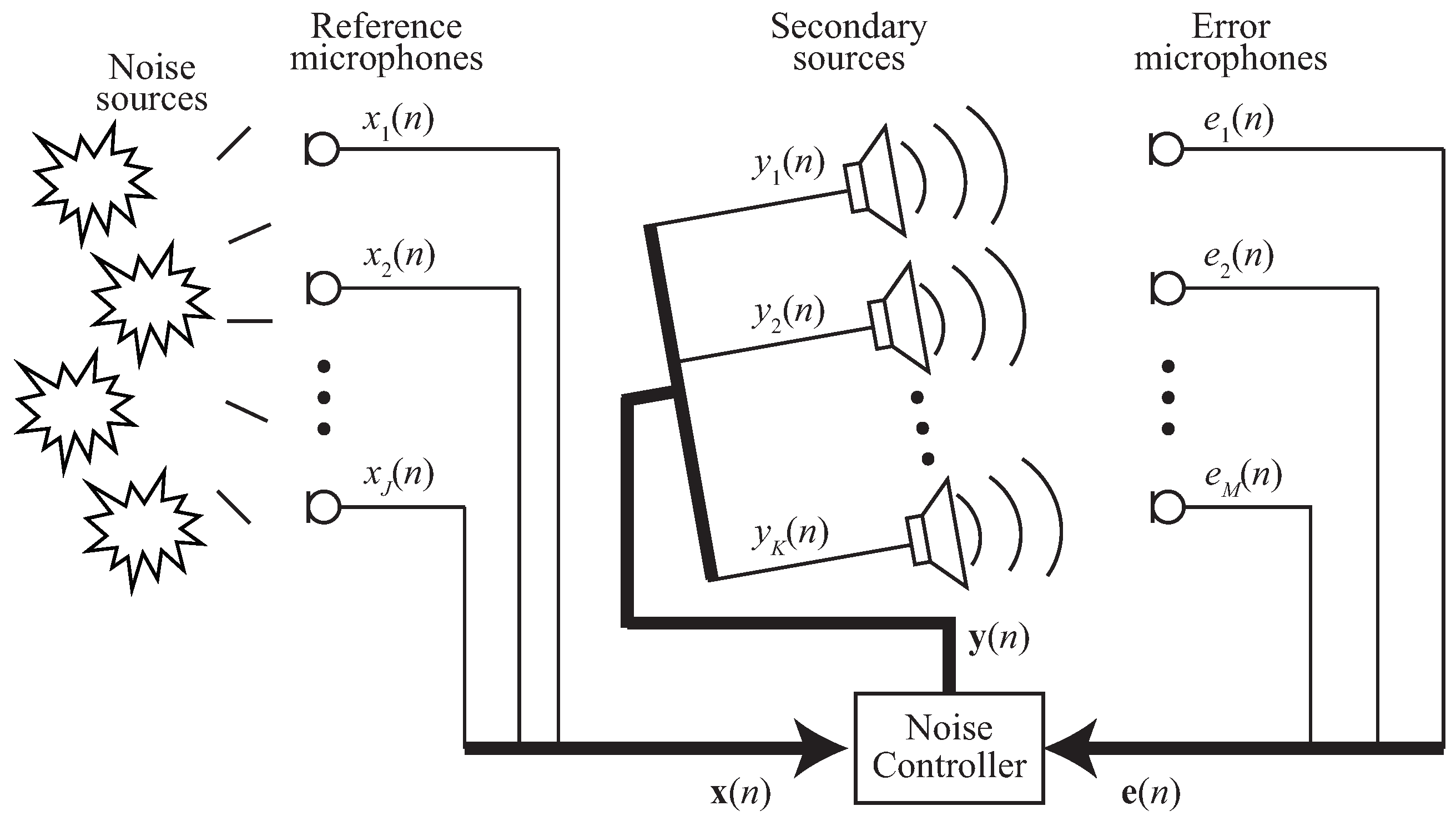

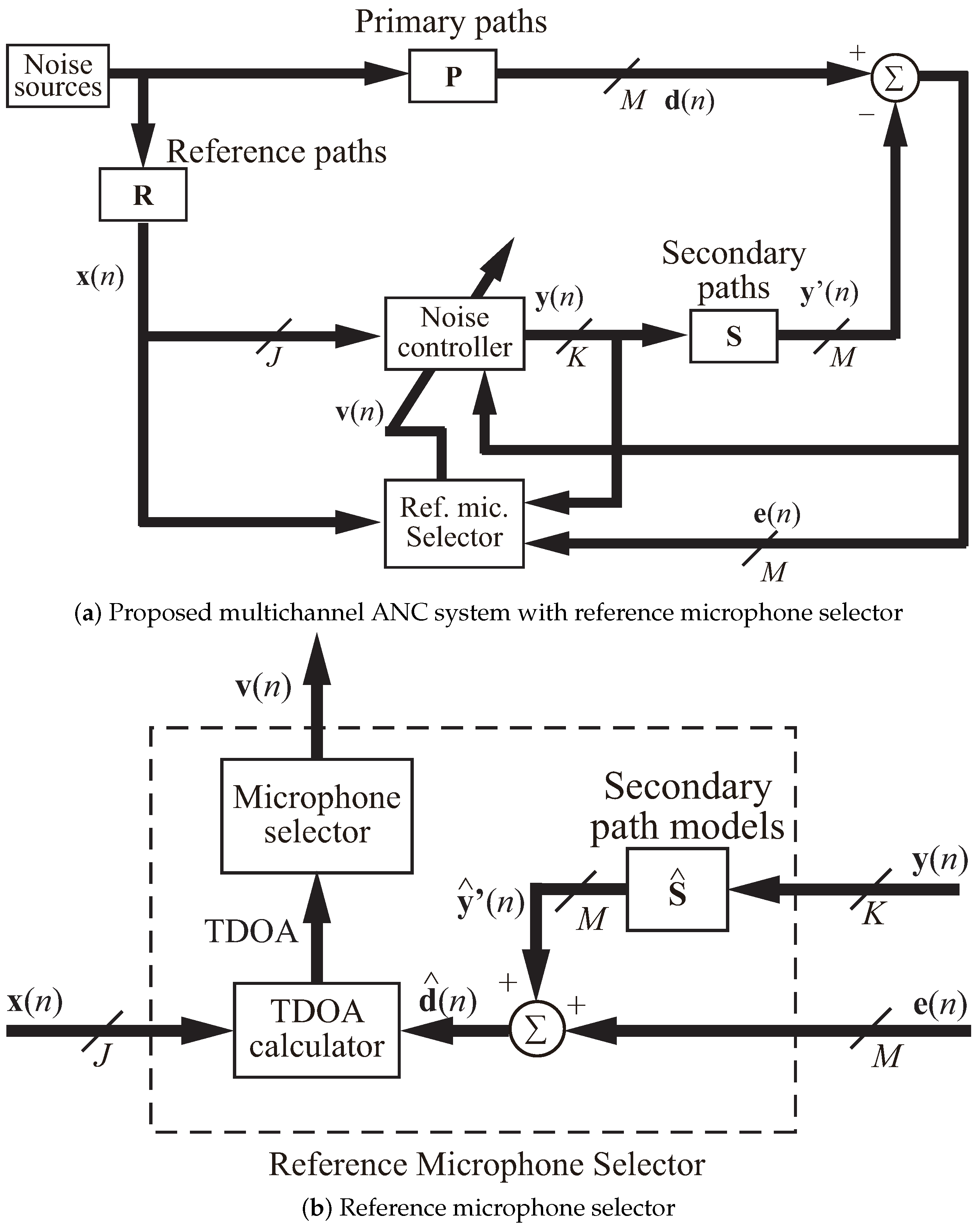
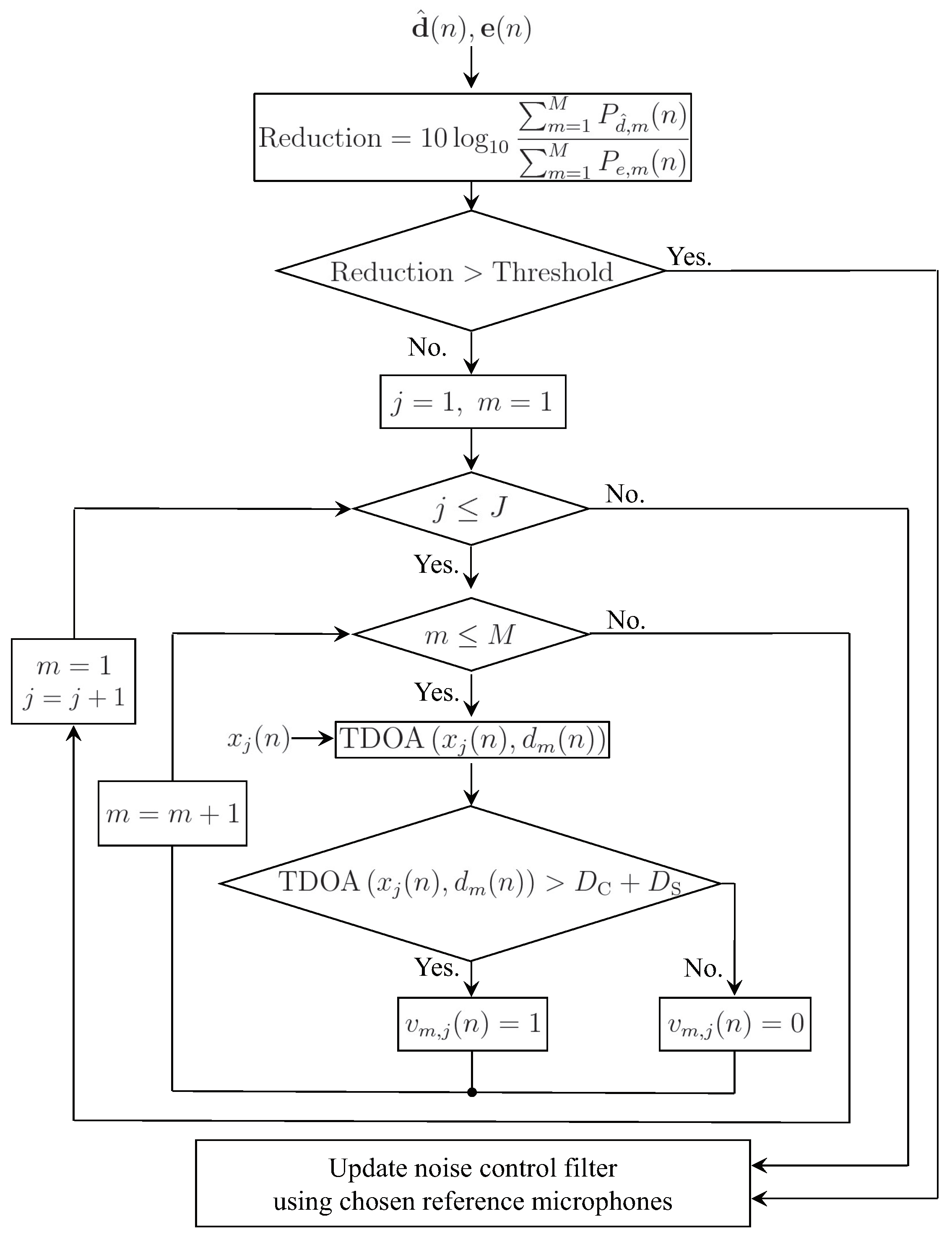
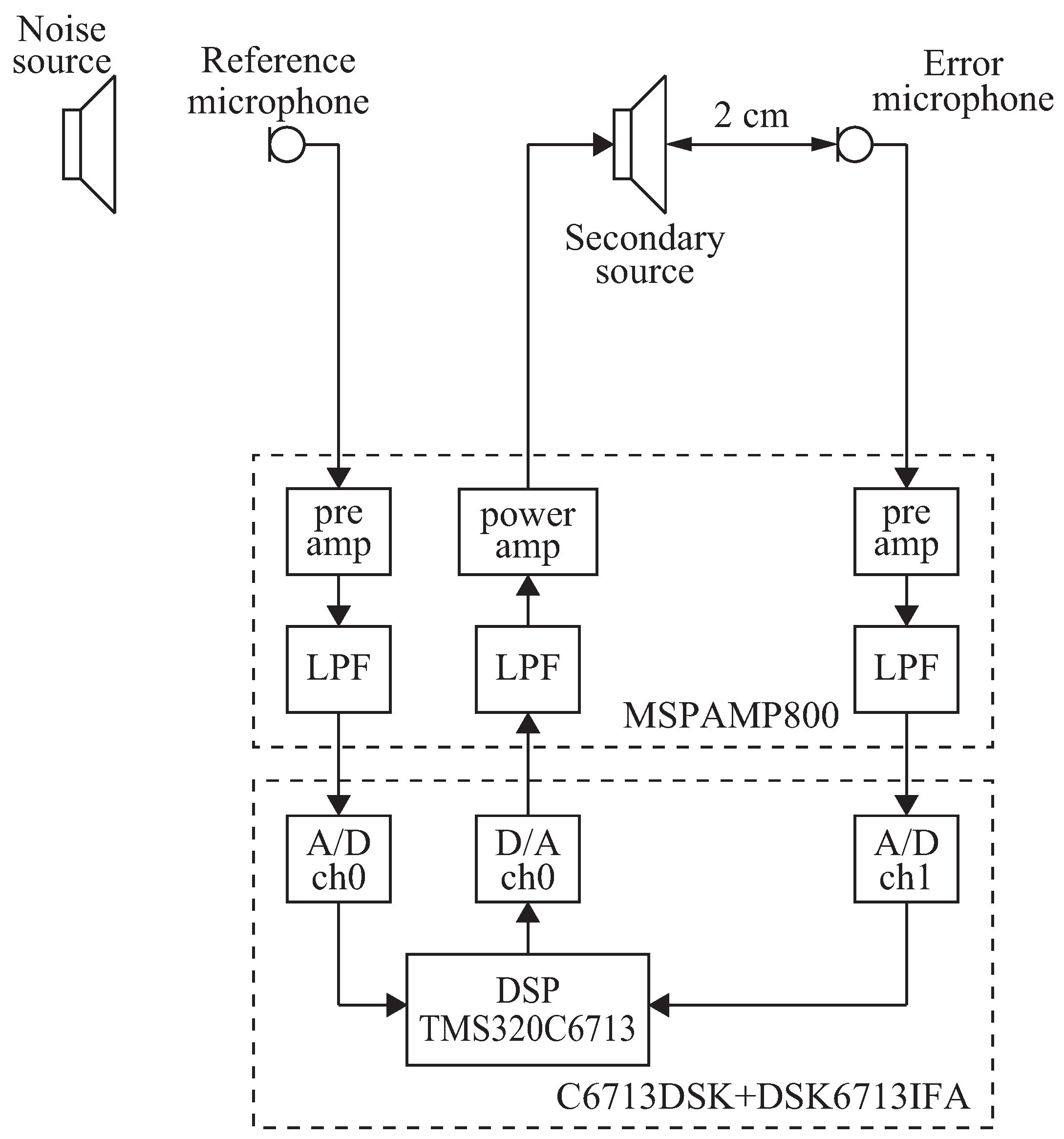


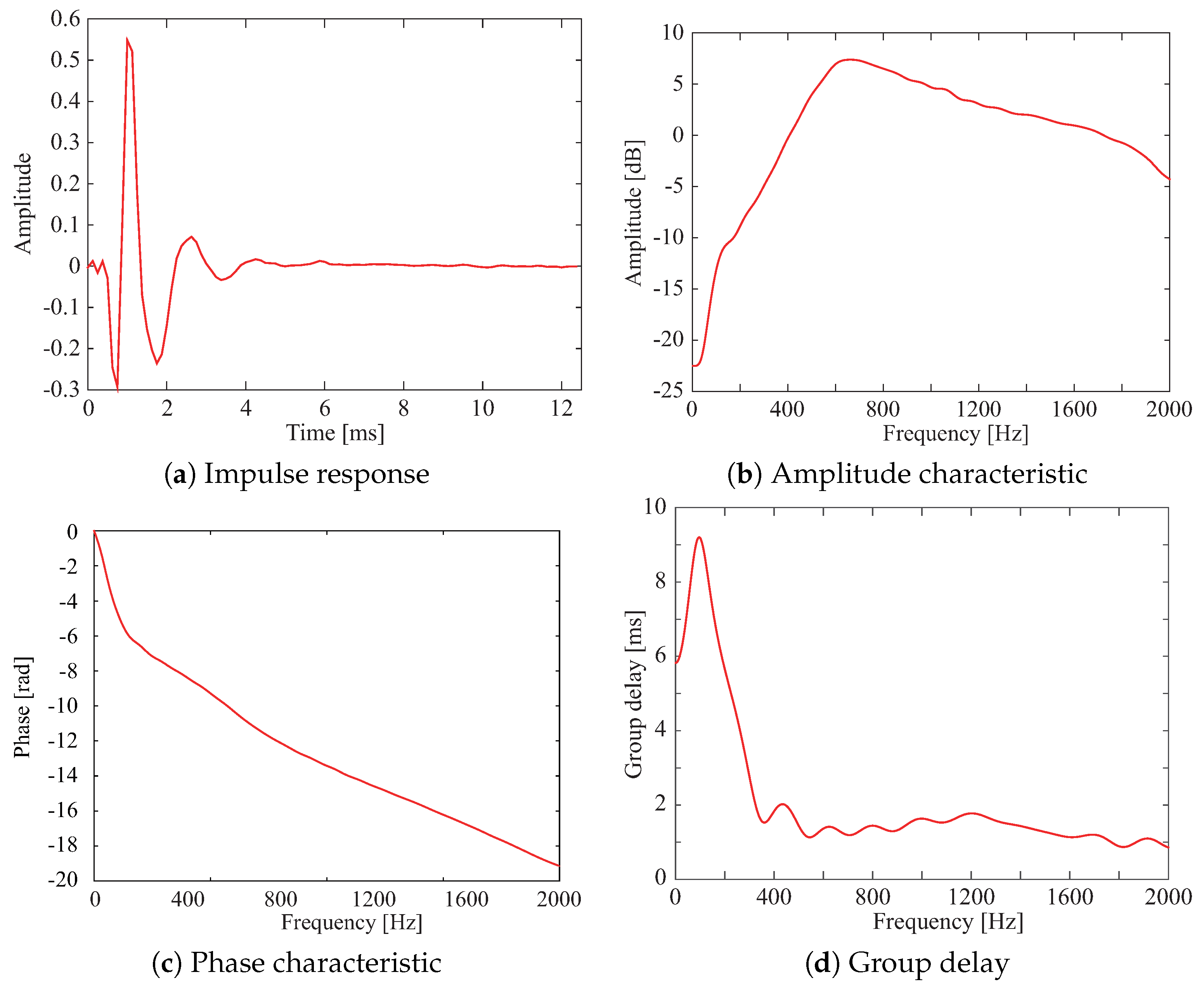
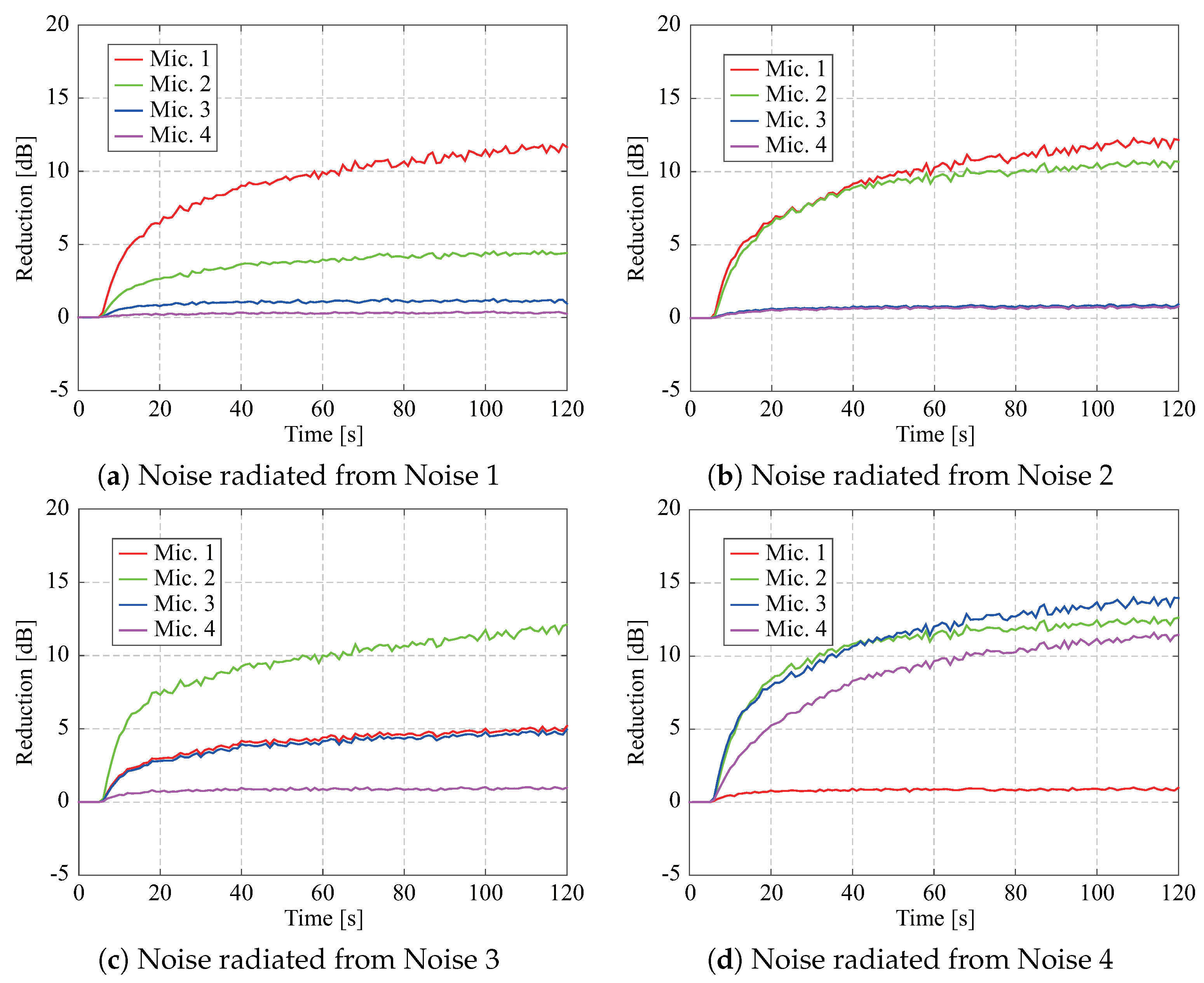
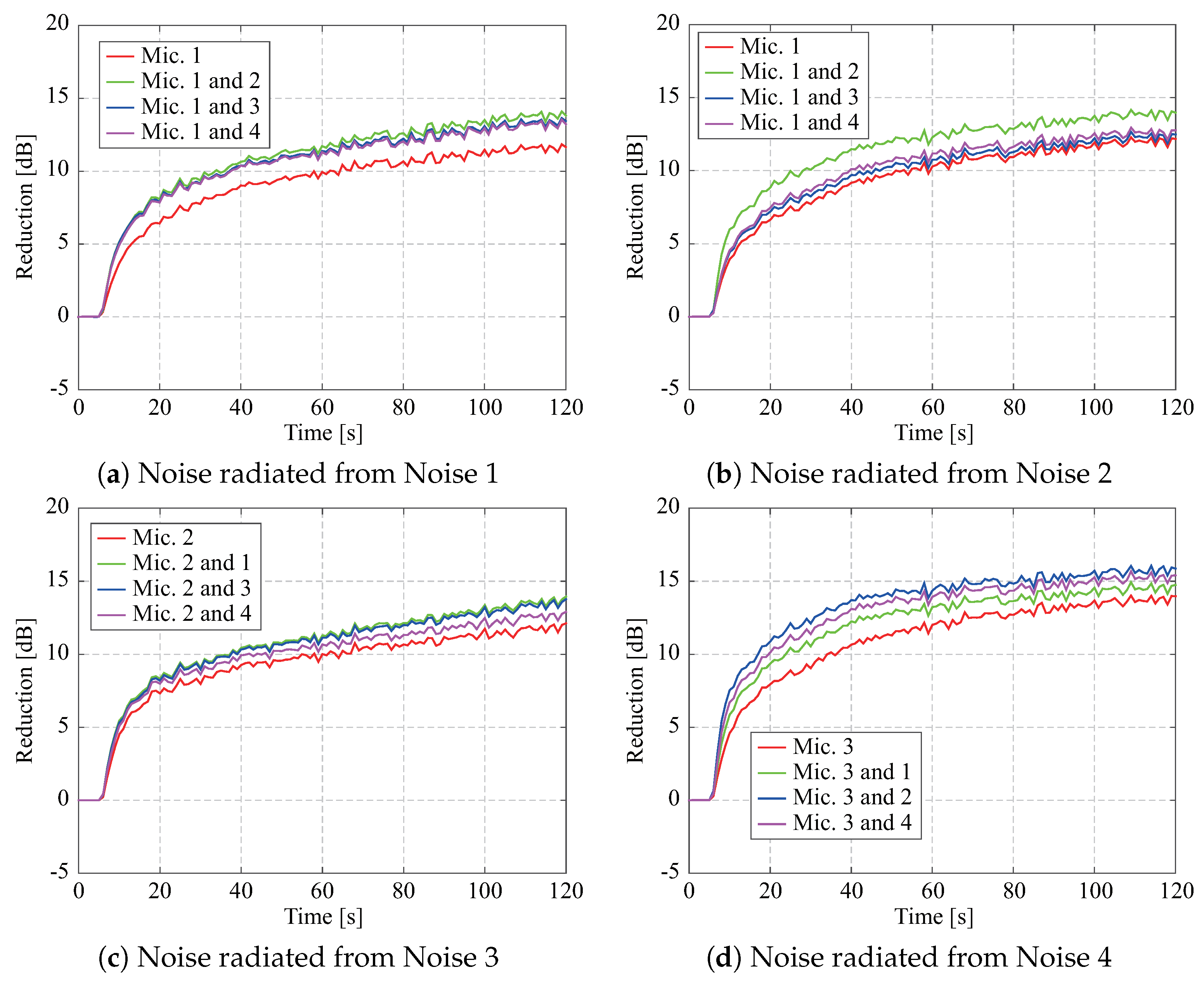
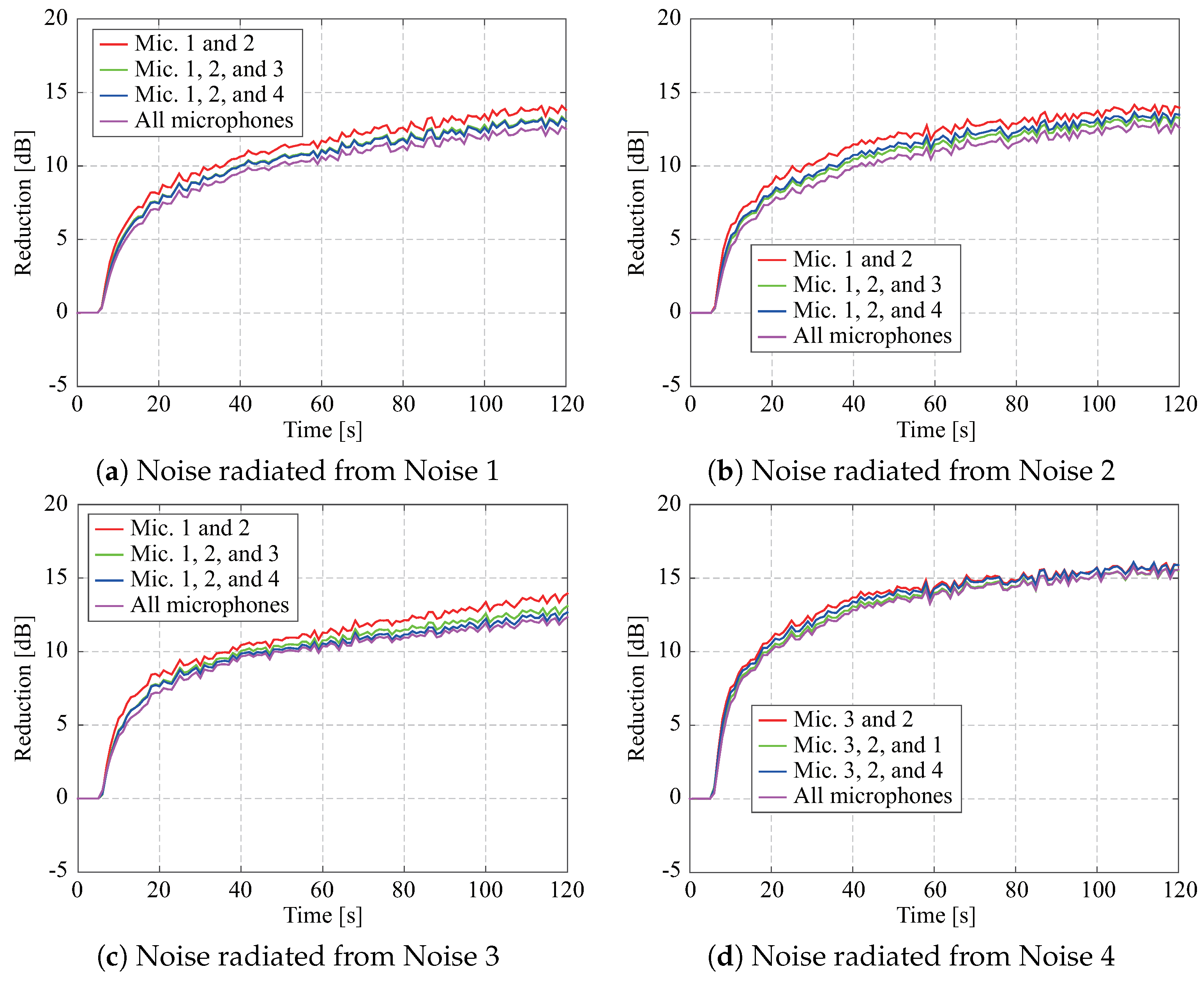
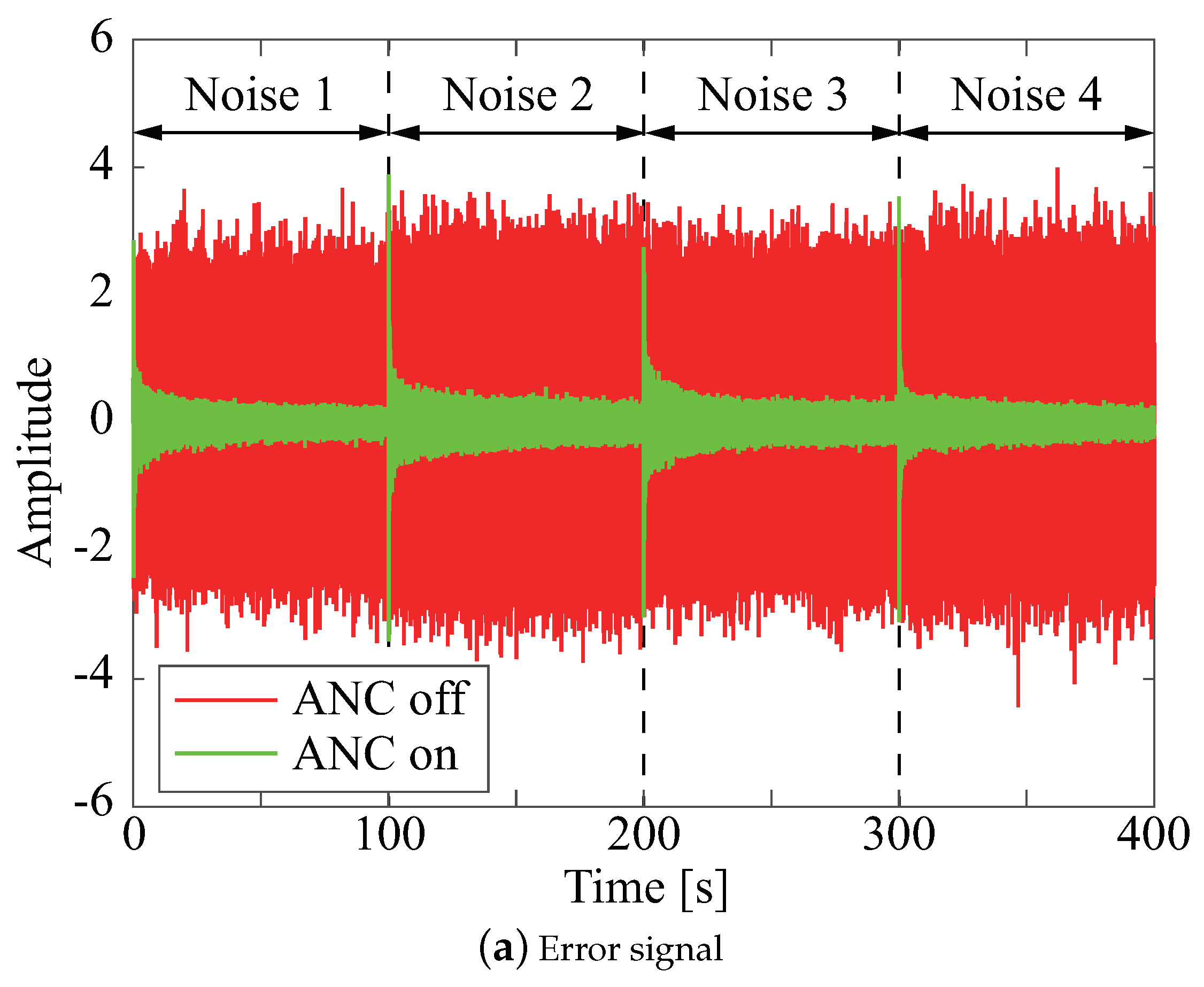
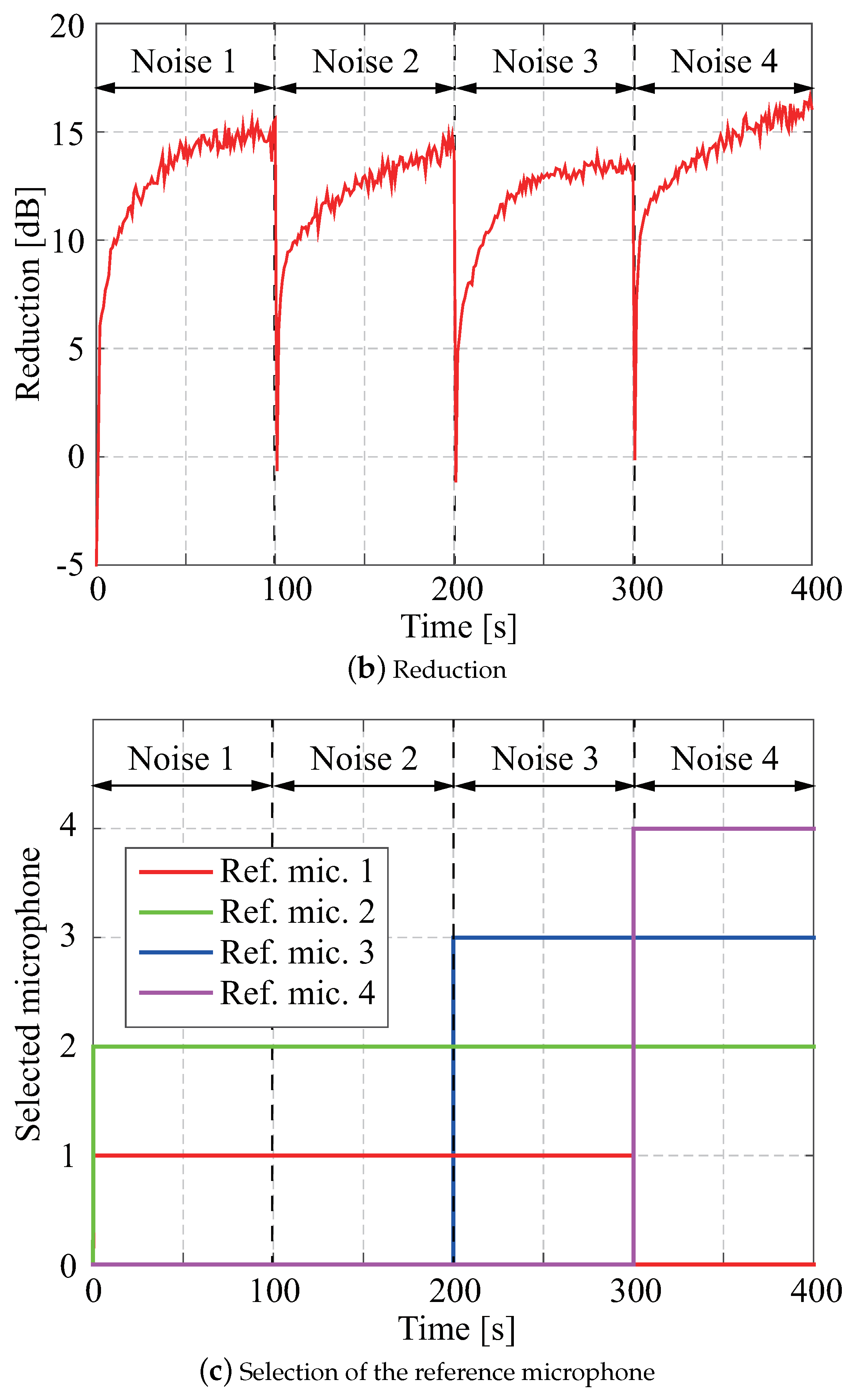
| Noise 1 | Noise 2 | Noise 3 | Noise 4 | |
|---|---|---|---|---|
| Reference mic. 1 | 70.7 | 61.8 | 29.3 | 0.0 |
| Reference mic. 2 | 29.6 | 41.1 | 50.0 | 41.1 |
| Reference mic. 3 | −16.7 | 0.0 | 29.3 | 61.8 |
| Reference mic. 4 | −64.7 | −46.3 | −11.8 | 41.1 |
| Input signal | White noise |
| Sampling frequency | 8000 Hz |
| Cutoff frequency of analogue low-pass filter (LPF) | 2000 Hz |
| Tap length of secondary path model L | 100 |
| Input signal | White noise |
| Sampling frequency | 8000 Hz |
| Cutoff frequency of LPF | 2000 Hz |
| Tap length of noise control filter N | 400 |
| Tap length of secondary path model L | 100 |
| Step size parameter | 0.01 |
| Regularization parameter | 1.0 |
| Noise | White noise |
| Sampling frequency | 8000 Hz |
| Cutoff frequency of LPF | 2000 Hz |
| Tap length of noise control filter N | 400 |
| Tap length of secondary path model L | 100 |
| Step size parameter | 0.2 |
| Regularization parameter | 1.0 |
© 2018 by the authors. Licensee MDPI, Basel, Switzerland. This article is an open access article distributed under the terms and conditions of the Creative Commons Attribution (CC BY) license (http://creativecommons.org/licenses/by/4.0/).
Share and Cite
Iwai, K.; Hase, S.; Kajikawa, Y. Multichannel Feedforward Active Noise Control System with Optimal Reference Microphone SelectorBased on Time Difference of Arrival. Appl. Sci. 2018, 8, 2291. https://doi.org/10.3390/app8112291
Iwai K, Hase S, Kajikawa Y. Multichannel Feedforward Active Noise Control System with Optimal Reference Microphone SelectorBased on Time Difference of Arrival. Applied Sciences. 2018; 8(11):2291. https://doi.org/10.3390/app8112291
Chicago/Turabian StyleIwai, Kenta, Satoru Hase, and Yoshinobu Kajikawa. 2018. "Multichannel Feedforward Active Noise Control System with Optimal Reference Microphone SelectorBased on Time Difference of Arrival" Applied Sciences 8, no. 11: 2291. https://doi.org/10.3390/app8112291





